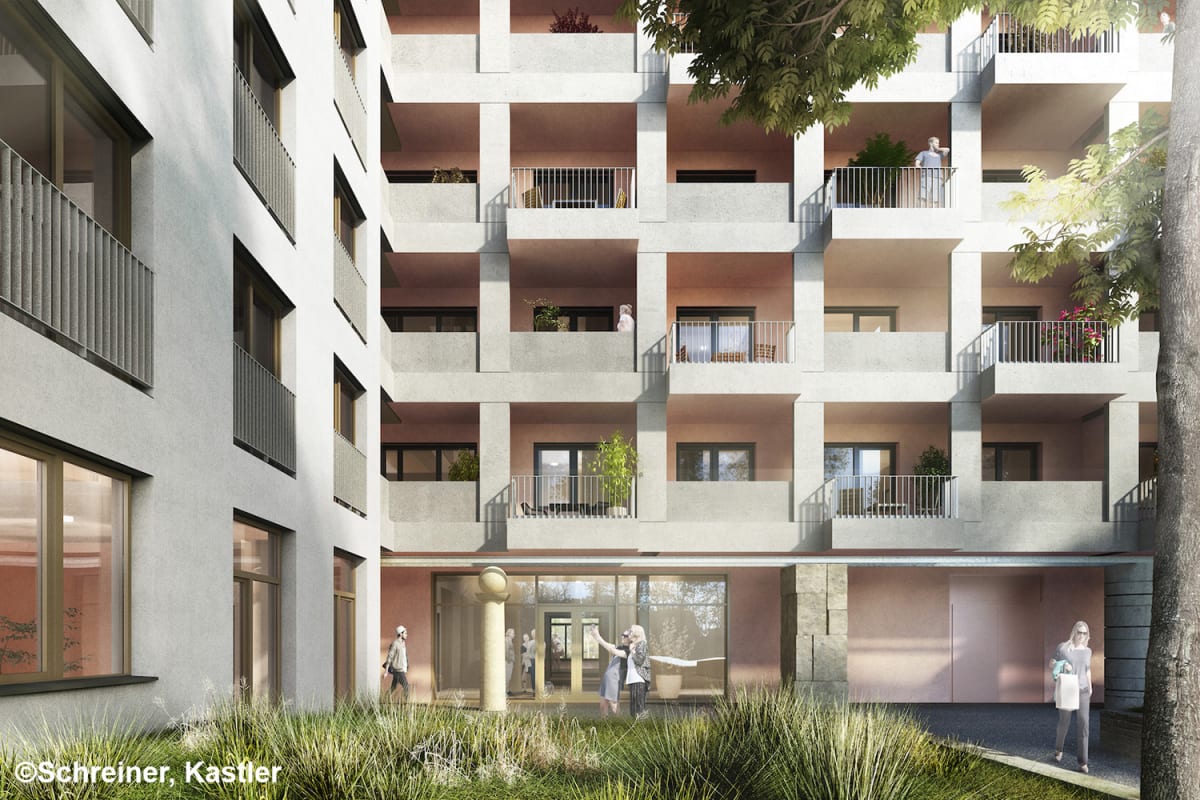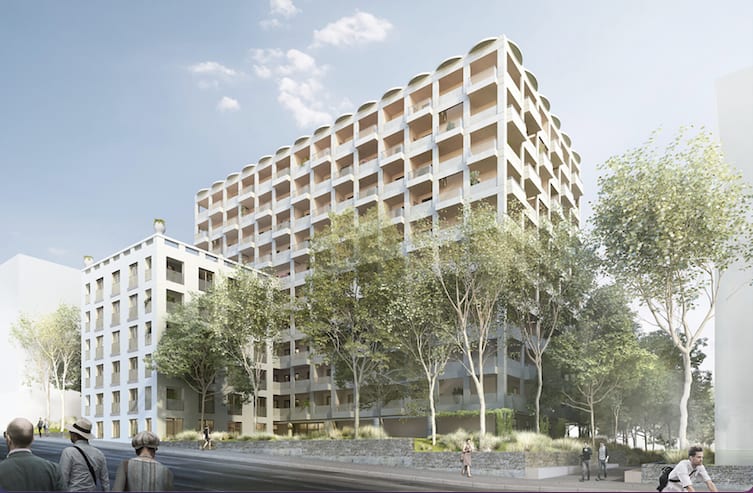As Far From the NZ Housing Market You Can Get
Housing
Young Europeans enjoy the security of affordable city dwelling, while in New Zealand, housing is prohibitively expensive for many. Mark Southcombe argues that the cooperative housing model should urgently be introduced here.
Comment: Stephanie stayed with us on her international study exchange year from Austria in 2005. When we last visited her and her partner Gabe in Vienna in 2016, they lived in an apartment in Vienna’s 14th district that they rented and were remodelling its kitchen.
Their rental agreement allowed them, as of right, to renovate it if they funded the work themselves and to seek approval for any structural or service changes they proposed.
They had an ongoing rental agreement that allowed secure tenure with 10-yearly renewals as of right and a three-month notice exit clause. This means they could make changes to their kitchen secure in the knowledge they would enjoy them.
Many advantages of housing cooperatives
Stefanie and Gabe got married in 2018, and their housing needs have changed as they plan for a family. For NZ$58,000, they have just purchased the rights to a generous 79 m2 2-bedroom apartment under construction nearby.
This remarkable value is achievable because they are purchasing shares in a large housing cooperative. Their shares entitle them to secure tenure over their own home for their lifetime, with rights that allow their shares to be inherited by their family who could also live in it if they choose.
Stefanie and Gabe will also pay a monthly below-market rent of around NZ$1,200 that will remain affordable because it is inflation indexed. It includes common area maintenance costs and is approximately two-thirds of Vienna’s market rents. Their apartment is ‘very green’ and has a balcony, access to a park and access to common amenities like a roof garden, children’s playroom and playground, party room and bike room. Such is the popularity of cooperative housing, there was a four-year waiting list for the apartment.

Co-ownership model
What’s different to an equivalent owned apartment in Aotearoa New Zealand with an expensive deposit and mortgage is that Stefanie and Gabe are both shareholder owners and tenants. Their cooperative shares fund part of a loan contributing to the building costs.
If they decide to live elsewhere, the shares will be refunded less 1 percent per year they have lived in the building so that the initial costs for new occupants will remain at a similar level.
The ongoing affordable rental will continue funding a fair long-term return to the cooperative. The city of Vienna is not the property owner, but provides funding security to enable the project to be realised.
The primary value of the apartment to Stefanie and Gabe is the long-term housing security that comes from ongoing affordable rights to live in their shared apartment as opposed to its value as a financial investment vehicle.
Housing in New Zealand is a financial commodity
In Wellington, the value of housing as an investment dominates its value as a place to live. As an individual, it is hard to compete with speculators and investors like the company that recently bought 30 houses at once.
While smart, well-designed density is needed, much of what is designed and built is to maximise short-term financial gains for the developer and investor. Examples are the swathes of minimum-width developer terraced houses with little usable outside space and dual-key apartment developments that minimise areas but maximise returns.
Speculation on housing has transformed the building industry, with many builders now focused on design and build with land and building or direct negotiation on terms they dominate. Architects and homeowners are struggling to find builders who will even price projects.
The extent of demand for new housing has resulted in what is effectively a housing futures market where much of the new housing under construction and materials pipelines are pre-sold. This process too often sidesteps customisation or meaningful inputs to address individual client needs and long-term environmental needs.
Future housing is auctioned off pre-designed plans, maximising the costs of what is now a market product in a scarce market. This financialisation of housing laughs in the face of housing affordability and limited budgets.

Potential to address affordability
It’s clear we need to find ways to decouple housing tenure and housing investment and finance. We are one of the few developed countries in the world with no cooperative housing sector known for doing exactly that.
Given our history of papakāinga, co-housing and the shared space reality of all medium and high-density housing types, it’s curious we have almost no cooperative housing examples. Our regulatory, financial and legal context even resulted in the historical Peterborough Cooperative Housing in Christchurch adopting a new unit title ownership structure to redevelop after the earthquakes.
In Europe, it couldn’t be more different, with cooperatives formally recognised by UNESCO World Heritage as a Cultural Treasure, and it’s easy to see why, as first-home owners Stefanie and Gabe’s experience shows us.
Housing cooperatives are by now a well-established form of tenure in the German-speaking countries, acknowledged for producing durably affordable rents and stable neighbourhoods. For example, the City of Zurich administration saves millions of dollars a year by enabling cooperatives to operate.
The potential for cooperative housing to contribute to long-term housing affordability needs to be recognised here in a similar way and given research and demonstration project investment by our investment funds.
Educating people with quality examples
Kiwis are sceptical about shared housing in the way they were previously sceptical about prefabrication. That changed in a few short years through the efforts of PrefabNZ and innovative built projects. We can change our collective minds about the value and characteristics of cooperative housing as well.
The path is through education and housing innovation. We need practical demonstrations of quality long-term housing affordability with quality cooperative housing projects in our unique Aotearoa New Zealand environment.
Cooperative housing can be structured to support increased quantities of ongoing affordable housing as a self-replicating, self-funding housing model that reinvests in more cooperative housing as individual cooperative housing projects pay off their debt.
An outstanding example is Zurich’s Mehr als Wohnen which has 13 buildings and nearly 400 housing units as well as retail outlets, large shared community spaces and good neighbourhood infrastructure. It is one of the largest, most ambitious housing programmes in Europe and the result of a collaboration between 50 different cooperatives.
There is now some urgency in creating demonstration Aotearoa cooperative housing projects and associated open-source resourcing to help facilitate others.
When this happens, the qualities of this type of housing will be self-evident. It will help seed a long-term affordable housing taonga for a new generation that we can all enjoy and be proud of, like Stefanie and Gabe.
This article was first published in Branz’s Build Magazine and is republished with permission.





